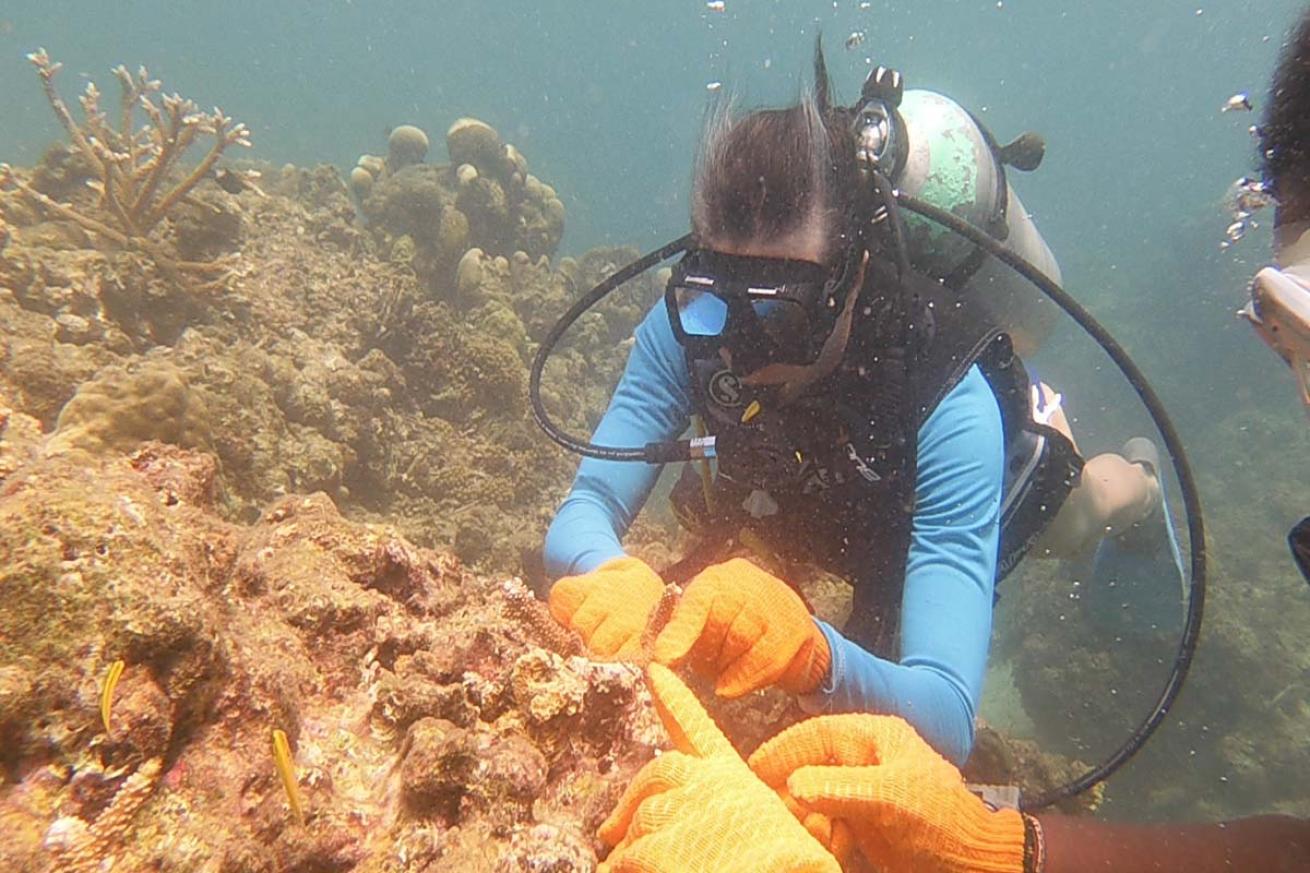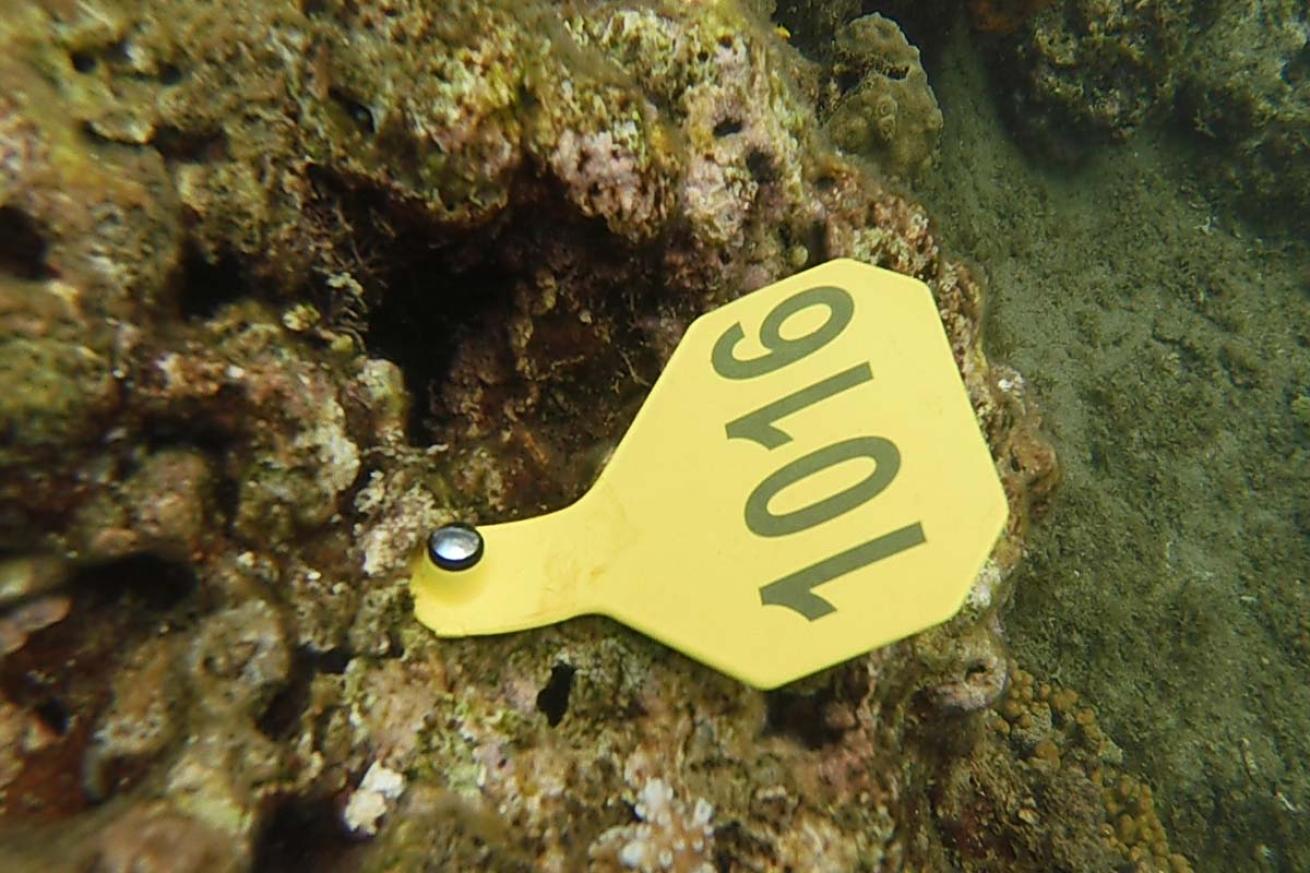How I Became a Reef Rescuer in the Caribbean

Courtesy Windjammer LandingThe author affixes her coral fragment to a protected area of the reef.
Like many divers, Eget Martyr has a longstanding love affair with coral reefs—source of spectacular underwater scenery, rich marine life, and, most importantly, her livelihood. For nearly 30 years, she has worked as a divemaster in the submarine fantasy land surrounding her home island of St. Lucia. To sustain this love affair, Eget donates her time to the island’s reef restoration efforts, which are coordinated by the Perry Institute for Marine Science's Reef Rescue Program. Established in 2017, the Reef Rescue Network's partner 29 operators have outplanted 7,736 coral fragments at 30 nurseries across 14 islands.
Every week Eget joins her colleagues from Windjammer Landing and other St. Lucia resorts, maintaining coral nurseries and outplanting new corals back to the reef. “I am passionate about the natural environment,” she says. “I want to do my part to protect it for future generations, so they are able to appreciate the benefits that the coral reef provides us as an island people.”
I recently joined the effort. Certified-diver guests at Windjammer Landing can help the locals protect and maintain this fragile underwater ecosystem: The resort’s on-site dive shop offers a three-day Environmental Dive Package, which includes hands-on experience at the reef and certification as a PADI Reef Rescue Diver.
On a lazy Saturday morning, when the rest of the resort is still asleep, the boat dock bustles with volunteers loading equipment, water and lunches donated by the Ministry for Sustainable Tourism. As we motor down the west side of St. Lucia, Eget and I review the material I studied for the certification: the lifecycle of corals; the most dangerous threats to the reef; and how reef restoration works. We make two stops to drop off supplies and provisions for other teams of volunteers, and then we are off to our first dive site, the coral nursery at Anse Jambette, or Dagger Bay.
The Windjammer divers maintain the smaller of two coral nurseries in St. Lucia, located near Canaries Village on the west side of the island. Floating mid-water at a depth of twenty-five feet, three humanmade PVC “trees” each hang with about fifty growing fragments of staghorn coral (a critically endangered species in the Caribbean). Protected from sediment and predators, the tree nurseries provide ideal conditions for the corals to grow.
Keeping the structures free of algae promotes the corals’ healthy development, so my job is to clean the tree itself—the tags, the piping and the floss-like wires that suspend the coral fragments. Eget demonstrates how to scrub vigorously with a small wire brush, removing all traces of algae, ideally without touching the coral itself, before I try my hand at it. This is the mundane but critical work that makes for a successful reef restoration project.
With the scrubbing done, we harvest a coral fragment for outplanting to the reef. When corals have at least six inches of new growth, they can be sliced off, a process called coral fragmenting. At least two inches of the original fragment to continue to grow on the tree while the rest is taken to a new site to propagate a fresh coral. Eget finds another, smaller fragment that had fallen off a tree, so we take it along to outplant as well.
Back on the boat, we keep the new coral fragments in sea water while motoring a short distance to a protected area of reef. I learn how to mix the two-part epoxy that will secure the fragments to the rock below the surface. That’s when the clock starts: We now have about thirty minutes to get the job done before the epoxy hardens.

Windjammer LandingNumbered tags help staff monitor coral progress and mortality.
We descend to the reef in search of a location to plant our baby coral fragments. The ideal spot is a bare rock or dead reef, away from competitors like live coral, and free from algae or sediment. A natural hole or crevice provides extra support for the fragment while the epoxy dried. We decide against one spot when Eget notices a small brain coral and boulder star coral were growing nearby. Instead, I clean out a hole in a nearby alternative and affix my fragment. Eget does the same before nailing in a tag (#1016) near my coral so the team can monitor its health and development on their return trips. They promise to send me photos.
“This is a labor of love,” Eget said. “It takes a lot of time, effort, commitment, and nurturing before we realize the bigger results.”
Other volunteers go on to show me a garden of flourishing corals that they have planted. I am impressed: after only three months, these staghorn beauties are one to two feet tall, with multiple limbs branching off in all directions. The team’s pride and passion for this endeavor is evident—and well deserved. I say a little prayer to Neptune that my baby coral #1016 will also thrive.
The most active volunteers on reef restoration programs are part-time or permanent Caribbean residents who can contribute time on a regular ongoing basis. Bill Mulvey is a recreational diver who has been “fragmenting, hanging, cleaning, cleaning, cleaning, and planting corals off Bonaire” for about five years.
“The real thrill of having worked on reef restoration for so long is seeing the results of everyone’s work, when the planted corals start spawning and restoring the reef all by themselves,” he says.
Now that I have earned my PADI Reef Rescue certification, I can assist the Perry Institute’s efforts in Aruba and in the Bahamas as well as St. Lucia. Reef Renewal is another similar organization that has active coral restoration programs in Bonaire, Curaçao, and Cayman, as well as in the Florida Keys.
As an occasional visitor, my intention is to build an extra day of reef restoration into any future dive itinerary, so I can keep up my skills and care for the reef. One day is small contribution, but it’s a big reminder about the fragility of the reef—and the planet—and my personal responsibility to care for it in between dives.










